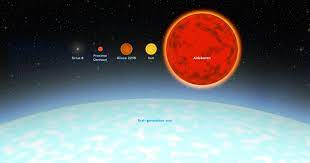
The quest to understand the universe’s origins has fascinated scientists for centuries. Among the most intriguing mysteries is the search for the universe’s earliest stars. These ancient celestial bodies hold the keys to understanding how the universe evolved from a hot, dense state into the vast, structured cosmos we see today.
The First Stars: A Cosmic Dawn
The first stars, often referred to as Population III stars, are believed to have formed about 100 to 250 million years after the Big Bang. These stars were composed almost entirely of hydrogen and helium, the lightest elements, since heavier elements had not yet been formed through stellar processes. Their formation marked the end of the “cosmic dark ages,” a period when the universe was opaque, and light from these stars played a crucial role in reionizing the universe, making it transparent.
See Here:
The Challenge of Detection
Detecting these first stars is an extraordinary challenge due to their immense distance and faintness. Over billions of years, the light from these ancient stars has redshifted, stretching into the infrared part of the spectrum. This means that to observe these stars, astronomers need incredibly sensitive infrared telescopes. The James Webb Space Telescope (JWST), launched in 2021, is one of the most powerful tools available for this purpose. With its advanced infrared capabilities, JWST has the potential to peer further back in time than ever before, possibly revealing the first stars.
Clues from Stellar Fossils
In addition to direct observation, astronomers also search for clues about the universe’s earliest stars by studying ancient star remnants, known as “stellar fossils.” These are stars in our galaxy that have extremely low metal content, indicating that they formed shortly after the first generation of stars. By analyzing the chemical composition of these stars, scientists can infer the characteristics of the Population III stars that preceded them.
The Role of Dark Matter
Dark matter, an invisible substance that makes up about 85% of the universe’s mass, also plays a critical role in the formation of the earliest stars. The gravitational pull of dark matter helped gather the gas clouds that eventually collapsed to form the first stars. Understanding how dark matter influenced star formation in the early universe is a key area of research, as it could provide insights into the nature of dark matter itself.
Implications for Cosmology
Discovering and understanding the universe’s earliest stars is not just about piecing together the history of the cosmos; it has profound implications for cosmology as a whole. These stars were responsible for producing the first heavy elements, setting the stage for the formation of planets and, ultimately, life. Moreover, studying the formation and evolution of these stars helps refine models of cosmic evolution and provides a clearer picture of how the universe developed its current structure.
Future Prospects
The search for the universe’s earliest stars is ongoing, with new discoveries constantly refining our understanding of the early cosmos. Future missions, such as the planned Thirty Meter Telescope (TMT) and the European Extremely Large Telescope (E-ELT), promise even greater insights. As technology advances, astronomers are optimistic that we will one day directly observe these ancient stars, unlocking secrets that have been hidden for billions of years.
Conclusion
The search for the universe’s earliest stars is a journey into the unknown, pushing the boundaries of modern astronomy and cosmology. These ancient stars are more than just distant points of light; they are the beacons that illuminate the history of the universe, guiding us in our quest to understand the origins of everything we see around us today.





